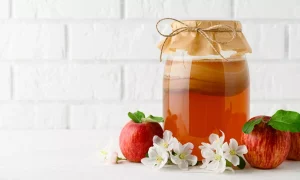Seasonal Foraging and Incorporating Wild Ingredients into Meals

There’s something primal—almost magical—about plucking food straight from the earth. Foraging isn’t just a survival skill; it’s a way to reconnect with nature’s rhythms. And honestly? Wild ingredients can elevate your cooking from ordinary to extraordinary. Let’s dive in.
Why Forage? The Benefits of Wild Ingredients
Wild foods pack a punch. They’re often richer in nutrients than their cultivated cousins—think vitamin C in nettles or antioxidants in elderberries. Plus, foraging is sustainable. No pesticides, no food miles. Just you and the land.
Here’s the deal: seasonal foraging keeps you in sync with nature. Spring offers tender greens, summer bursts with berries, autumn delivers nuts and mushrooms, and winter? Well, it’s about preservation and hardy finds like rosehips.
Getting Started: Foraging Basics
Rule #1: Safety first. Misidentification can be dangerous. Invest in a good field guide or join a local foraging group. When in doubt, leave it out.
Rule #2: Respect the land. Take only what you need, avoid rare species, and never strip a plant bare. Foraging’s about balance—leave enough for wildlife and regrowth.
Rule #3: Know the laws. Some areas restrict foraging in public parks or protected lands. Check local regulations—better safe than fined.
Essential Foraging Tools
- A sturdy basket or breathable bag (plastic smothers delicate finds)
- Sharp scissors or a knife
- Gloves (for nettles or prickly plants)
- A notebook to track spots and seasons
Seasonal Foraging Guide
Spring: The Green Awakening
Spring’s like nature’s reset button. Look for:
- Dandelions: Every part’s edible—bitter greens, sweet flowers, even the roots.
- Nettles: Blanch them to disarm the sting, then use in soups or pesto.
- Wild garlic: Pungent leaves perfect for butters or salads.
Summer: Berry Bounty
Summer’s a sugar rush. Seek out:
- Blackberries: Freezer jam, anyone?
- Elderflowers: Fizz them into cordials or batter-fry the blooms.
- Wild strawberries: Tiny but explosive in flavor.
Autumn: Earthy Abundance
Autumn’s the forager’s jackpot. Highlights:
- Chanterelles: Golden, trumpet-shaped, and buttery when sautéed.
- Hazelnuts: Toast them for crunch in salads.
- Hawthorn berries: Tangy and great for jellies.
Winter: The Quiet Hunt
Winter foraging’s sparse but rewarding:
- Rosehips: Vitamin C bombs for syrups.
- Evergreen needles: Infuse teas with piney brightness.
- Kale-like seaweeds: Coastal foragers, this one’s for you.
Cooking with Wild Ingredients
Wild foods can be… well, wild in flavor. Balance is key. Pair bitter greens with fat (think bacon or olive oil), or mellow pungent roots by roasting. Here’s a quick table to spark ideas:
| Ingredient | Preparation Idea |
| Dandelion greens | Sauté with garlic and lemon |
| Elderberries | Simmer into a shrub (drinking vinegar) |
| Chanterelles | Toss with pasta and cream |
| Nettles | Blend into a vibrant pesto |
Pro tip: Start small. Mix wild ingredients with familiar foods—like adding a handful of sorrel to a potato salad. Your palate (and stomach) will thank you.
Preserving the Harvest
Foraging’s often feast or famine. When you hit the jackpot, preserve it:
- Freezing: Works for berries, blanched greens.
- Drying: Herbs, mushrooms, even flower petals.
- Fermenting: Wild kimchi, anyone?
- Infusing: Vinegars, oils, or spirits (hello, sloe gin).
The Ethical Forager’s Mindset
Foraging’s not just about taking—it’s about giving back. Plant seeds where you harvest. Volunteer for land conservation. Share knowledge, not just locations (overharvesting’s a real problem).
And remember: foraging connects you to place. That patch of ramps? It’ll greet you every spring—if you let it.
So next time you walk past a “weed,” pause. Maybe dinner’s hiding in plain sight.





